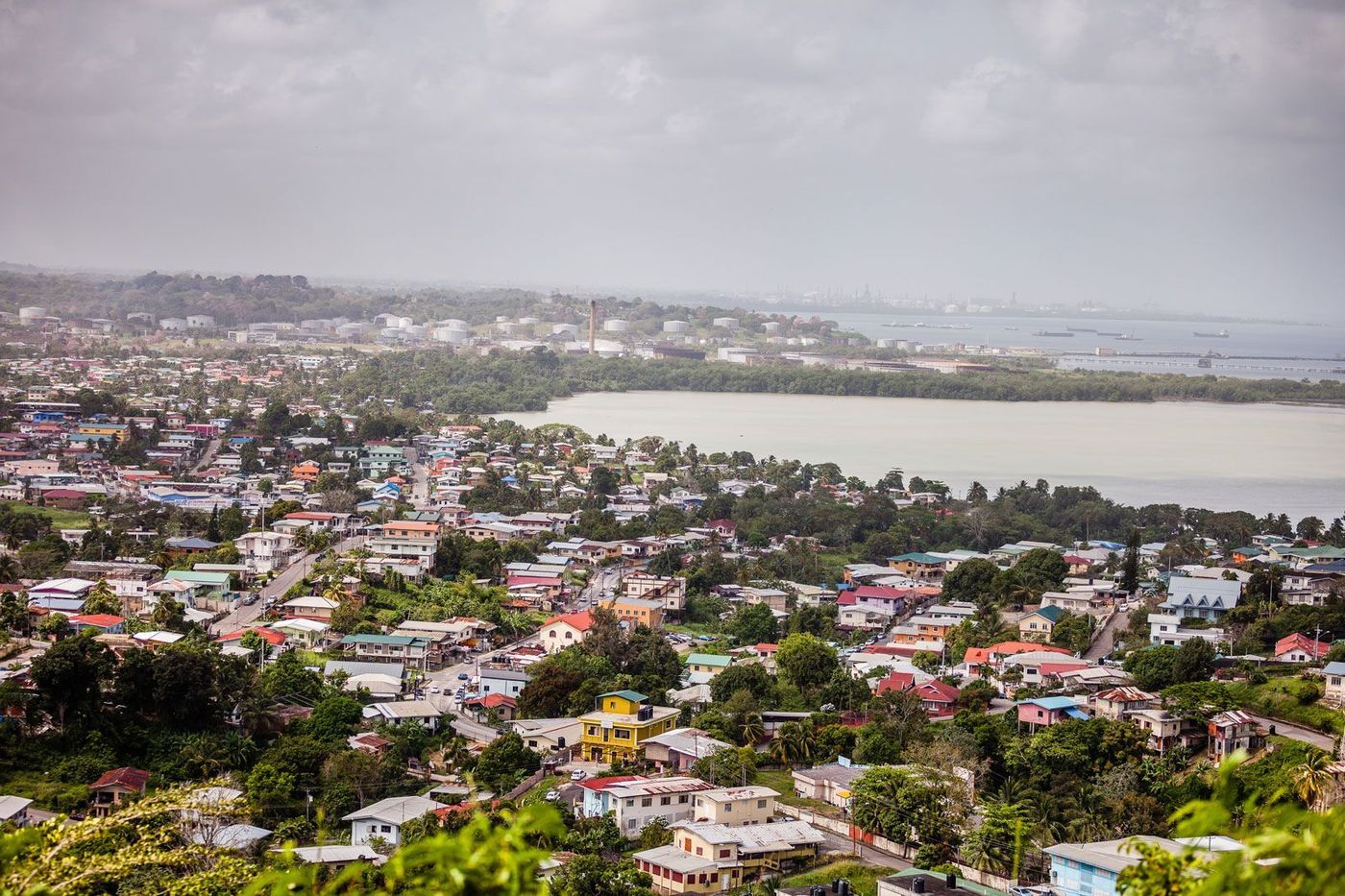
Trinidad and Tobago is a vibrant twin-island nation in the Caribbean, known for its rich culture, stunning landscapes, and diverse wildlife. Have you ever wondered what makes this country so unique? From its bustling cities to serene beaches, there's a lot to uncover. Did you know that Trinidad hosts the largest Carnival in the Caribbean, attracting visitors from around the globe? Or that Tobago is home to the oldest protected rainforest in the Western Hemisphere? Trinidad and Tobago also boasts a melting pot of cultures, reflected in its music, food, and festivals. Ready to learn more? Here are 20 fascinating facts about this captivating country.
Key Takeaways:
- Trinidad and Tobago, a twin-island nation, boasts diverse landscapes, from the largest natural deposit of asphalt to the oldest protected rainforest in the Western Hemisphere.
- With a rich history influenced by various civilizations, Trinidad and Tobago's vibrant culture, robust economy, and warm, diverse society make it a fascinating and unique Caribbean destination.
Geography and Nature
Trinidad and Tobago, a twin-island nation in the Caribbean, boasts diverse landscapes and rich biodiversity. Let's explore some fascinating geographical and natural facts about this beautiful country.
- Trinidad is the larger of the two islands, covering about 4,768 square kilometers, while Tobago is much smaller, with an area of 300 square kilometers.
- The islands are located just off the northeastern coast of Venezuela, separated by the Gulf of Paria.
- Trinidad and Tobago are home to the oldest protected rainforest in the Western Hemisphere, the Main Ridge Forest Reserve, established in 1776.
- The Pitch Lake in Trinidad is the largest natural deposit of asphalt in the world, spanning roughly 100 acres.
- Tobago's Buccoo Reef is one of the most accessible coral reefs in the Caribbean, offering stunning underwater views.
History and Culture
The history and culture of Trinidad and Tobago are as vibrant as its landscapes. The islands have a rich heritage influenced by various civilizations and traditions.
- Trinidad was first settled by the Arawak and Carib indigenous peoples before being colonized by the Spanish in 1498.
- The British took control of Trinidad in 1797, and Tobago in 1814, uniting the two islands as a single colony in 1889.
- Trinidad and Tobago gained independence from the United Kingdom on August 31, 1962.
- The islands are known for their Carnival, a pre-Lenten festival featuring elaborate costumes, music, and dancing, celebrated with great enthusiasm.
- Steelpan, the national instrument of Trinidad and Tobago, was invented in the 1930s and is the only acoustic musical instrument invented in the 20th century.
Economy and Industry
Trinidad and Tobago have a robust economy, primarily driven by the energy sector. However, there are other interesting aspects of their economy worth noting.
- The country is one of the wealthiest in the Caribbean, thanks to its large reserves of oil and natural gas.
- Trinidad and Tobago are the largest exporters of liquefied natural gas (LNG) to the United States.
- The islands also have a thriving manufacturing sector, producing goods such as food and beverages, cement, and chemicals.
- Tourism plays a significant role in Tobago's economy, with visitors flocking to its pristine beaches and natural attractions.
- Agriculture, though a smaller part of the economy, includes the cultivation of cocoa, sugarcane, and various fruits and vegetables.
People and Society
The people of Trinidad and Tobago are known for their warmth and hospitality. The society is a melting pot of ethnicities, religions, and traditions.
- The population of Trinidad and Tobago is approximately 1.4 million people, with a mix of African, Indian, European, and Middle Eastern ancestry.
- English is the official language, but Trinidadian Creole and Tobagonian Creole are widely spoken.
- The country has a high literacy rate, with over 98% of the population being literate.
- Trinidad and Tobago have a diverse religious landscape, including Christianity, Hinduism, Islam, and various Afro-Caribbean faiths.
- The islands are known for their culinary delights, such as roti, doubles, and callaloo, reflecting the rich cultural heritage of the nation.
Final Glimpse at Trinidad and Tobago
Trinidad and Tobago, a vibrant blend of cultures, history, and natural beauty, offers something for everyone. From the bustling streets of Port of Spain to the serene beaches of Tobago, this twin-island nation is a treasure trove of experiences. The rich tapestry of festivals, like Carnival and Diwali, showcases the islands' diverse heritage. Unique wildlife, such as the scarlet ibis and leatherback turtles, adds to the allure. Culinary delights, including doubles and roti, tantalize taste buds. The islands' history, marked by colonial influences and independence, shapes its modern identity. Whether you're exploring lush rainforests, diving into crystal-clear waters, or immersing yourself in local traditions, Trinidad and Tobago promises unforgettable memories. So, pack your bags and get ready to uncover the magic of this Caribbean gem.
Frequently Asked Questions
Was this page helpful?
Our commitment to delivering trustworthy and engaging content is at the heart of what we do. Each fact on our site is contributed by real users like you, bringing a wealth of diverse insights and information. To ensure the highest standards of accuracy and reliability, our dedicated editors meticulously review each submission. This process guarantees that the facts we share are not only fascinating but also credible. Trust in our commitment to quality and authenticity as you explore and learn with us.


